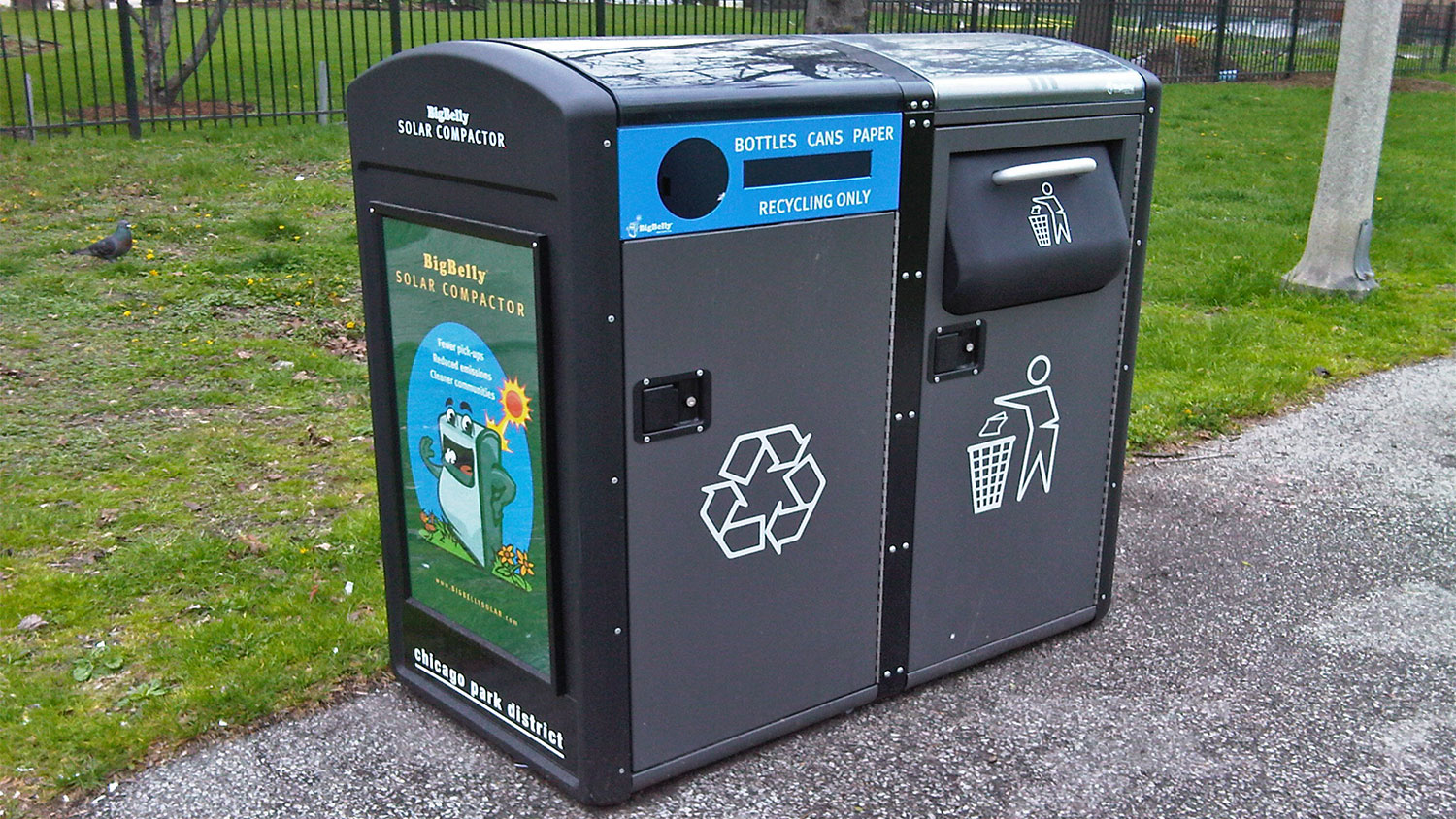Q. I’ve been wondering about these garbage- and recyclable-eating solar compactors I see popping up all around cities. They look like a wonderful alternative to the standard bins, but is it a good idea to be compacting our recyclables? If the market depends on the materials’ viability for reuse, wouldn’t these contaminate them and render them less valuable or reduce their potential for “new” life?
Emily C.
New York, NY
Dearest Emily,
A. Bigger isn’t necessarily better, as any fan of tiny houses, smart cars, or kittens can tell you. And these days, plenty of cities – including New York, Philadelphia, Chicago, New Orleans, and my own Seattle — are thinking small with their garbage and recyclables through the installation of the solar compactors you mention. Squished blocks of discarded soda cans aren’t likely to make any lists of cute tiny things, true, but are these compactors still a good idea on our city streets? I think so; here’s why.
First, a closer look at those high-tech recycling bins (many of which are made by Bigbelly): They’re really quite remarkable. You usually see them in pairs, with one receptacle for trash and one for recyclables – but let’s focus on the latter for the purposes of your question, Emily.
You deposit, say, a plastic bottle. When the bin reaches a certain level of fullness (determined by a sensor), it automatically compacts the contents using nice, clean solar energy collected by a panel on top. After a few rounds of smashing, the bin approaches maximum capacity, at which point the compactor sends a signal to the city’s waste managers that it’s time for a pickup. We haven’t seen this level of interaction from a garbage can since Oscar the Grouch.
Why bother, you might ask? Recyclables tend to be light but bulky (lots of empty bottles, cups, and cans). By squashing them into a tight block, we can fit lots more into the bin before it needs emptying, which means the city has to make fewer trips to each compactor. And that means less gas burned by those hulking, not-exactly-fuel-efficient collection trucks, fewer minutes of carbon-emitting idling, and less air pollution, not to mention the cash savings the town earns with fewer pickup shifts. Philadelphia, which has had solar compactors in place for several years, reports they’ve let the city reduce trash pickups from 17 per week with three worker shifts to 3 per week and only one shift for a savings of $800,000 a year.
But clearly, Emily, you’ve been paying attention to our discussions of single-stream recycling. You know that clean, uncontaminated items are key if we want to sell them to recyclers to turn into new products. So how can crushing glass, paper, and all kinds of plastics into a cube retain their resale value?
In short: Because MRFs (materials recovery facilities, where our recyclables go after collection) can handle them! In fact, this is old hat for MRFs, as collection trucks are outfitted with compactors and have been crushing our recyclables into smaller chunks for years – if they couldn’t cram as many items as possible into one truckload, the cost of handling our recyclables would skyrocket.
But even though our throwaways get smaller, they’re not smashed into oblivion. When the compacted recyclables arrive at the local MRF, machines and employees can still break them apart for sorting. “Our processing systems are designed to pull apart and separate recycling that has been through some degree of compaction,” says Will Herzog, director of marketing for the recycling processing company ReCommunity.
It’s not completely foolproof: This kind of condensing can sometimes reduce the value of the recyclables a bit, acknowledges John Hambrose, communications manager for Waste Management’s Greater Mid-Atlantic area. But he says that relatively small loss is offset by all the benefits we discussed above. Mostly, paper can still end up with paper, #3 plastics with other #3 plastics – we’ve just made the whole process more efficient.
So fear not the solar compactor – it’s a safe place for your on-the-go glass, plastic, and paper. The only thing better would be no waste at all (don’t get me started again on reusable coffee cups).
Condensedly,
Umbra



